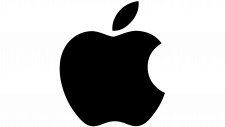Toshiba Logo
Toshiba, a giant in the technology arena, emerged from Japan. Its creation traces back to the innovative minds of Tanaka Hisashige and Ichisuke Fujioka. They launched this venture in Tokyo, aiming to revolutionize the tech landscape. Toshiba embarked on a journey to pioneer advancements in electrical equipment. Over time, it expanded its focus, delving into consumer electronics, home appliances, and more. The brand stands as a testament to innovation, quality, and reliability. It brings cutting-edge technology to households and businesses worldwide, continually pushing the boundaries of what’s possible in the tech world.
Meaning and history
Toshiba’s roots date back to 1875, marking the beginning of its illustrious journey. The brand’s name, Toshiba, was officially adopted in 1939, symbolizing the merger of Tokyo Denki and Shibaura Seisaku-sho. This union aimed at creating a powerhouse in the electrical industry. Toshiba’s history is punctuated with significant milestones. In 1950, it made waves by launching Japan’s first radar. The introduction of the laptop in 1985 further solidified Toshiba’s reputation as an innovator. Throughout the decades, Toshiba has been at the forefront of technological advancements, adapting and evolving with the changing times to remain a key player in the global tech industry.
What is Toshiba?
Toshiba stands as a beacon of technological innovation. The company specializes in a wide range of products, from electronics to energy solutions. It harnesses cutting-edge technology to improve lives and pave the way for a sustainable future. Toshiba continues to influence the tech world profoundly, shaping how technology enhances our daily lives.
1893 – 1904
The logo features three horizontal stripes centrally placed within a diamond shape, enclosed by a circular border. The diamond’s edges extend to touch the circle, creating a visual bridge between the two shapes. This geometric interplay suggests a fusion of core stability with infinite possibilities, hinting at the brand’s commitment to both solidity and expansion. This emblem, with its stark contrast and simple geometry, conveys a sense of enduring strength and purposeful direction.
1904 – 1919
This logo radiates a fluid, calligraphic quality, markedly different from its predecessor. It abandons geometric formality for a free-flowing, script-like design. Here, the letters dance with an artistic flair, reminiscent of brush strokes on a canvas. The design evokes a personalized touch, as though signed by a skilled artisan. It is less about symmetry and more about character, expressing movement and human craftsmanship. This emblem seems to tell a story, perhaps of a brand’s evolution from industrial precision to a more organic, human-centric approach. The change reflects a shift from rigid structure to creative expression, symbolizing adaptability and a personal touch in the brand’s journey.
1919 – 1925
This logo contrasts sharply with the previous fluid, calligraphic style, returning to stark geometry. Two bold, identical plus signs command attention at the top, set above a prominent ‘Z’ character. The design is encased within an oval border, adding a sense of completeness and boundary. The ‘Z’ stretches with confidence, its lines straight and unyielding, a departure from the previous logo’s curves. It conveys a message of strength, order, and forward-thinking—a visual leap into a new era of identity.
1925 – 1939
This emblem marks a departure from its antecedent, favoring a circular form that encases the acronym “TEC”. The letters are stout, with substantial presence, nestled within the confines of the circular border. The typeface is unadorned, bold, and straightforward, emphasizing clarity and directness. This design’s simplicity suggests a focus on functionality and essentialism, possibly reflecting a company’s modern and accessible approach. The shift from intricate symbolism to plain, bold lettering highlights a turn towards a more direct and pronounced corporate identity.
1939 – 1943
This design evolves into a dual-circle emblem, distinct from the prior single oval. Each circle contains a symbol: one contains a stylized “Z” under a plus sign, the other contains complex Japanese characters. The two circles meet, sharing a border, symbolizing a merger or partnership. The characters and ‘Z’ are bold and pronounced, denoting a solid foundation. The shared border could represent the seamless integration of different entities or ideas. This logo moves from individuality to collaboration, mirroring perhaps a corporate alliance or an expansion of scope. The design maintains simplicity but with a new layer of meaning, indicating growth and connection.
1943 – 1946
The logo could indeed represent the blade of a kitchen instrument, such as a food processor or blender. The pointed shape within the circle gives the impression of a blade in motion, symbolizing efficiency and precision. The circular outline may suggest the appliance’s body or the unity of a complete product. This kind of imagery is often used in branding to convey the effectiveness and dynamic nature of kitchen appliances. It’s a clean, sharp design, aligning well with the values of functionality and modernity that such devices embody.
1946 – 1950
Reverting to the 1939 design, this logo features the Japanese characters previously seen. The circular boundary remains, a consistent element symbolizing continuity and the global whole. This logo, while sharing the previous logo’s simplicity, conveys cultural identity strongly and proudly. The choice to revert to an earlier style could indicate a reaffirmation of the company’s origins or values. It’s a blend of the modern and the historic, a nod to the past with a continued commitment to the present.
1950 – 1983
Transitioning to a Western-style script, the logo now spells “Toshiba” in a fluid, cursive font. The letters are bold and connected, emphasizing a unified and cohesive brand. Gone are the Japanese characters, replaced with a universally recognizable Latin alphabet. This script conveys elegance and a more approachable, global identity. It marks a significant shift toward international appeal, perhaps reflecting the company’s expansion and its embracement of a wider audience. The typography suggests refinement and confidence, a company at ease with its legacy and looking towards a global future.
1969 – 1983
The latest iteration presents “TOSHIBA” in a bold, sans-serif typeface, a clear shift from cursive to a more industrial and modern look. Each letter stands alone, blocky and assertive, symbolizing strength and stability. The elimination of script signals a move towards a straightforward, universal brand presentation. This design favors functionality and readability, reflecting a no-nonsense approach to business. It’s a logo for the modern era, suggestive of progress and technological advancement. The uniformity in the characters denotes a systematic, reliable, and accessible company identity.
1983 – Today
The logo retains its sans-serif boldness but now blooms in a vibrant red, replacing the stark black. This color change infuses the logo with energy, passion, and power. Red is often associated with excitement, a dynamic shift signaling bold moves and a spirited brand personality. The switch from a neutral to a warm color palette may reflect a desire to connect more emotionally with consumers. The design remains clean and uncluttered, maintaining the brand’s modern and direct messaging. This evolution highlights Toshiba’s confidence and drive in the marketplace.





















